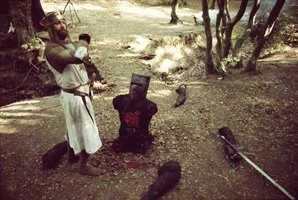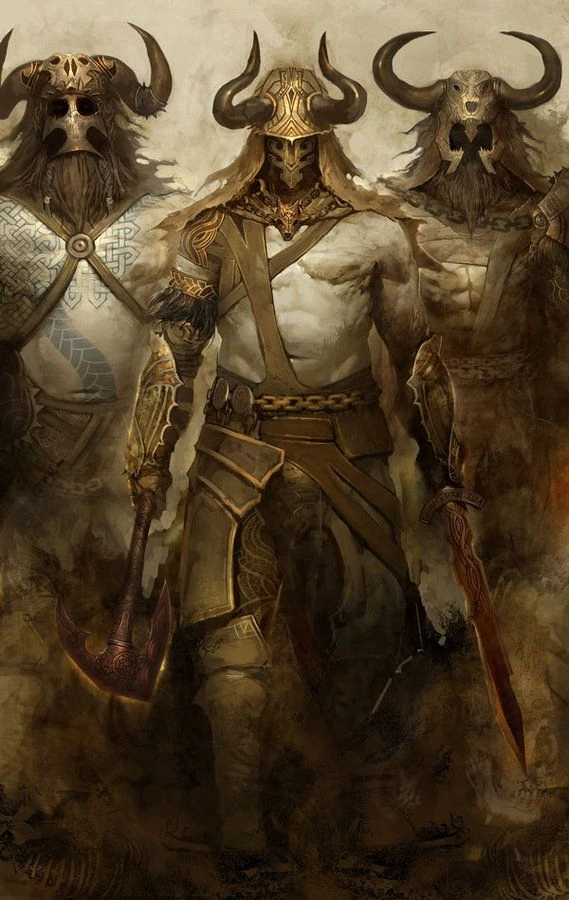"Where am I?" thought the man. He had tried to open his eyes, but he still couldn't see anything. The man tried to move, but he found himself restrained. His hands and feet had been bound by what appeared to be some form of rope. He was able to sit up from what felt like a stone floor. How long had he been here? How did he get here? He couldn't remember. The man looked around him, but still, he saw nothing. He was in complete and utter darkness.
The man shuffled around in place trying desperately to find some source of light, but it was to no avail. "I must be in some sort of cave," he inferred. "But how did I get here? The last thing I remember was... nothing. I don't remember anything! Who am I?!"
"Kamsa... Kamsa..."
"What? Kamsa?" said the man quizzically. Then, it all came rushing back to him. "Kamsa, that's my name. I had been holding a large festival at Mathura, the capital of my kingdom. However, it had just been a ruse to get at Krishna. Krishna! This must be his doing. When I get a hold of - "
"Kamsa..."
"Wait, where is that coming from? Who's there? How did I get here?!" yelled Kamsa, shrinking back. Just then, there was a flash of light and a small woosh as a match was lit. Kamsa was immediately blinded as this new source of light cut through the darkness. As his eyes adjusted, Kamsa was struck with terror at what he saw. There were three man-like creatures with pitch-black skin in front of him. Their mouths were filled to the brim with razor sharp fangs, their heads were adorned with large, twisting horns, and they had long claws extending from their fingertips, but most terrifying of all, they each had dark, black holes where their eyes should be.
The nearest creature spoke up in a hissing voice, "Who we are is of little consequence, but as for how you got here... Oh, I think you know the answer to that question." A horrifying smile spread across his lips.
Then, Kamsa remembered. During the festival, Krishna had attacked him, and they had been engaged in combat. However, Kamsa had been losing, badly. Krishna knocked him on his back, and Kamsa was too beaten to stand back up. Krishna lifted up his hand into a mighty fist, dropped it onto Kamsa's head, and everything went black.
Recognizing the realization on Kamsa's face, one of the demons bellowed, "Hahaha! Welcome to Naraka!" The creatures chuckled in unison moving in around Kamsa. Each of them pulled out a large club, and before Kamsa could say anything, they began to beat him with a wretched rhythm. The beating lasted for several minutes before, unable to handle the pain any longer, Kamsa passed out.
When Kamsa awoke, he looked around. He was unable to move much due to the grievous injuries covering his body, but he seemed be on a conveyor system. At the end of the conveyor was a large metal roller. Next to the roller stood a tall dark figure. Kamsa recognized him from his childhood stories. It was Yama, the god of death.
"Please! I beg of you," Kamsa pleaded. "Have mercy on me! Please let me go, and I will never do wrong again!"
In reply, Yama smiled and flipped a switch turning on the conveyor system.
Author's Note:
This story is based on one of the stories from the Bhagawat about Krishna. In the stories, Kamsa, the main character in this story, is a cruel tyrant, and he is told that one day his nephew will kill him. So, he killed all the children of his sibling, up until Krishna was born, and Krishna was smuggled to a small village to keep him safe. Several years later, Krishna came back and killed Kamsa.
For my story, I wanted to look at what would happen to Kamsa in the afterlife. As Krishna grew up, Kamsa tried to kill him several times, and Kamsa did many evil things besides, so he definitely deserved some punishment after death. The descriptions I gave are based on Naraka, the Hindu hell. In Hinduism, there are different hells for different sins, and I thought Kamsa's actions fit with Tamisra and Shukaramukha which I described in my story.
Bibliography:
Naraka, Wikipedia,
link
Bhagawat: The Krishna Avatar, 2000, Amar Chitra Katha






